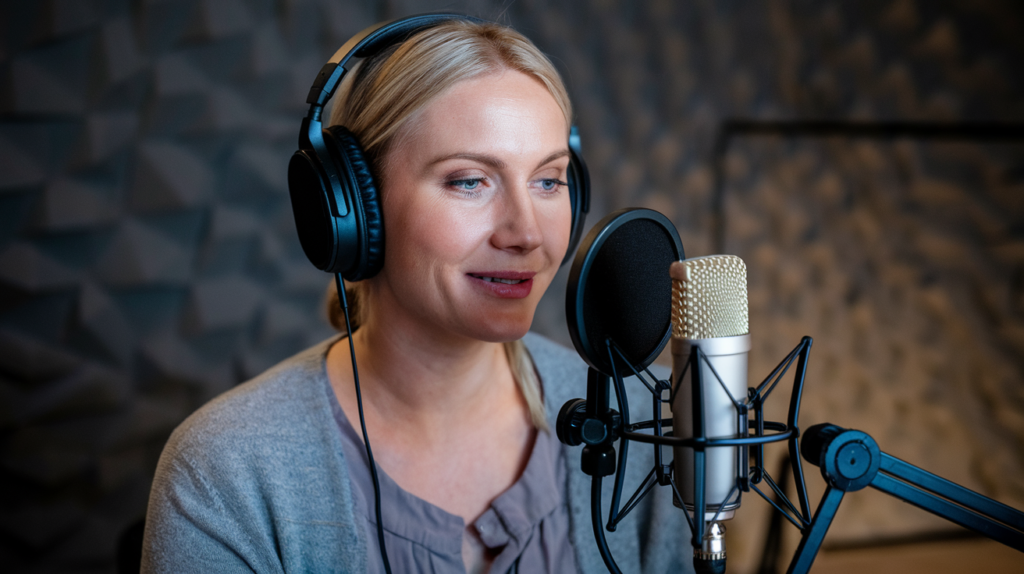Key Takeaways
- Distinctive Characteristics: Sydney Australian English has unique vocabulary, pronunciation, and intonation shaped by the city’s multicultural environment.
- Pronunciation Nuances: The accent is primarily non-rhotic, softening or omitting ‘r’ sounds at word endings, with notable vowel shifts compared to other regions.
- Local Vocabulary: Terms like “arvo” for afternoon and “brekkie” for breakfast exemplify local slang that enriches everyday conversations.
- Intonation Patterns: Speech often features a rising tone at the end of sentences, contributing to a friendly and approachable conversational style.
- Influence of Indigenous Languages: Local dialects are significantly influenced by Aboriginal languages, introducing unique vocabulary and cultural significance.
- Global Comparisons: Sydney Australian English contrasts with British and American English in pronunciation, vocabulary choices, and intonation patterns.
Ever wondered how Sydney Australian English stacks up against other regional dialects? Language is more than just words; it’s a reflection of culture, identity, and even lifestyle. In Australia, the way people speak can vary dramatically from one state to another, and understanding these differences can enhance your connection with locals.
Overview of Sydney Australian English
Sydney Australian English stands out due to its distinctive characteristics shaped by the city’s diverse culture. It features unique vocabulary, pronunciation, and intonation patterns that set it apart from other regional dialects in Australia.
Pronunciation Features
- Pronunciation in Sydney often includes a non-rhotic accent, meaning the ‘r’ sound at the end of words tends to be soft or omitted.
- Vowel pronunciation can vary; for instance, the vowel sounds in words like “mate” and “face” may differ significantly from those in other regions.
Vocabulary Distinctions
- Certain terms are particularly prevalent in Sydney. Phrases like “arvo” for afternoon and “brekkie” for breakfast reflect local slang.
- You’ll also encounter unique expressions that might confuse newcomers but enrich daily conversations among locals.
Intonation and Speech Patterns
- The intonation used by speakers often exhibits a rising tone at the end of sentences, even when making statements. This feature gives Sydney speech a distinct rhythm.
- Casual speech typically blends formalities with relaxed tones, creating a friendly atmosphere during interactions.
Familiarity with these aspects enhances communication when engaging with locals. Understanding how Sydney’s dialect reflects its vibrant culture proves beneficial for anyone looking to connect authentically within this dynamic environment.
Key Features of Sydney Australian English
Sydney Australian English features distinct characteristics shaped by the city’s multicultural backdrop. Understanding these nuances can enhance your interactions and help you connect with locals.
Pronunciation Differences
Pronunciation in Sydney differs notably from other regions. A non-rhotic accent prevails, meaning the ‘r’ sound often softens or disappears at word endings, making “car” sound like “cah.” Vowel sounds also shift; for instance, the vowel in “mate” tends to be more pronounced than in other dialects. You might notice that intonation patterns rise at the end of sentences, contributing to a friendly and approachable tone during conversations.
Vocabulary Variations
Vocabulary variations add richness to Sydney Australian English. Unique slang terms like “arvo” for afternoon and “brekkie” for breakfast pepper daily speech. Additionally, phrases such as “no worries” convey a laid-back attitude common among locals. Being aware of these terms not only enhances your understanding but also allows you to engage genuinely with speakers in their natural vernacular.
Comparison with Other Australian English Dialects
Sydney Australian English features distinct characteristics that set it apart from other regional dialects. Understanding these differences enriches your experience when interacting with Australians across the country.
Melbourne Australian English
Melbourne Australian English exhibits unique traits influenced by its cultural diversity. The accent here tends to be more rhotic than Sydney’s, often pronouncing ‘r’ sounds more clearly at the end of words. Vocabulary also varies; for instance, Melburnians frequently use terms like “footy” for football and “mocha” instead of coffee. Additionally, the intonation patterns may reflect a more pronounced upward inflection at the end of sentences compared to Sydney’s rising intonation. This creates a slightly different rhythm in everyday conversations.
Brisbane Australian English
Brisbane Australian English showcases its own distinctive features shaped by Queensland’s relaxed lifestyle. The accent leans towards non-rhotic tendencies similar to Sydney but often includes a broader vowel sound in words like “house.” Locals enjoy using colloquial expressions such as “youse” for you all and “bikkie” for biscuit. The informal tone is prevalent, promoting friendly interactions where locals might greet each other with phrases like “G’day mate!” These linguistic nuances reflect Brisbane’s laid-back atmosphere and contribute to an engaging conversational style.
Recognizing these variations enhances your ability to communicate effectively throughout Australia, helping you connect more meaningfully with individuals from diverse backgrounds.
Influence of Indigenous Languages
Sydney Australian English is significantly shaped by Indigenous languages, adding depth and richness to its unique characteristics. Various Aboriginal languages influence local vocabulary, pronunciation, and expressions. For instance, words like “bush” and “kangaroo” derive from Indigenous origins. Incorporating these terms enhances communication by connecting speakers to Australia’s cultural heritage.
Indigenous languages contribute distinct sounds that can alter the phonetic landscape of Sydney’s English dialect. The intonations and rhythms borrowed from these languages create a melodious quality in conversation. You might notice how some phrases resonate with the cadence found in Indigenous speech patterns.
Additionally, many locals embrace greetings or terms derived from Aboriginal languages in everyday interactions. This practice fosters respect for the original inhabitants of the land while enriching conversations with cultural significance. Familiarity with these influences not only enriches your understanding but also demonstrates appreciation for the diverse linguistic tapestry woven throughout Sydney.
Recognizing this influence enables meaningful connections among individuals from varied backgrounds. Engaging with Sydney Australian English through this lens offers insights into both language evolution and cultural identity across Australia’s regions.
Global Comparisons
Sydney Australian English exhibits distinct characteristics when compared to other forms of English spoken globally. These variations highlight not only regional differences but also cultural nuances that shape communication.
British English
British English contrasts sharply with Sydney Australian English in terms of pronunciation, vocabulary, and intonation. While British accents can vary widely from region to region, they generally maintain a rhotic nature, clearly pronouncing the ‘r’ sound after vowels. For example, in words like “car” or “hard,” the ‘r’ is emphasized. In contrast, Sydney speakers often soften this sound or omit it entirely in similar contexts.
Vocabulary also differs significantly; for instance, Brits might use “lorry” while Australians prefer “truck.” Slang terms are another area where these dialects diverge. Phrases popular in Britain may not resonate with Australians—consider how “cheers” serves as both thanks and farewell across the UK but holds different connotations down under.
Intonation patterns create further distinctions. British speakers may employ a more varied pitch range than Sydney locals, who typically favor a smoother rhythm with rising intonations at sentence endings. This creates a casual yet engaging conversational style unique to Sydney.
American English
American English presents another layer of contrast against Sydney’s dialect. One key difference lies in pronunciation; Americans tend to be rhotic as well but often articulate vowels differently than Australians do—take the word “dance,” which sounds distinctly different depending on where you are.
The lexicon varies too; common American phrases such as “elevator” versus Australia’s “lift” illustrate how regional language evolves uniquely over time. Colloquialisms can lead to misunderstandings if you’re not familiar—what an American calls “soda,” an Australian might refer to as “soft drink.”
Moreover, American intonation patterns differ significantly from those found in Sydney Australian English. Americans frequently emphasize specific words within sentences for clarity or emotion whereas Australians may adopt a more even tone throughout conversations.
Recognizing these global comparisons enhances your ability to communicate effectively across borders and enriches connections with individuals worldwide. Understanding these linguistic subtleties fosters meaningful interactions whether you’re chatting casually or navigating professional landscapes.
Conclusion
Understanding Sydney Australian English is key to appreciating the city’s vibrant culture. Its unique pronunciation and local slang create a friendly atmosphere that invites connection. By recognizing these distinct features you enhance your communication skills and foster authentic interactions with locals.
The influence of Indigenous languages adds depth to conversations while showcasing Australia’s rich heritage. Exploring how Sydney’s dialect compares to others—both within Australia and globally—allows you to navigate diverse linguistic landscapes effortlessly. Embracing these variations not only enriches your experience but also strengthens bonds across cultures, making each interaction meaningful.
Frequently Asked Questions
What is Sydney Australian English?
Sydney Australian English is a distinct dialect shaped by the diverse culture of Sydney. It features unique vocabulary, pronunciation, and intonation patterns, often characterized by a non-rhotic accent where the ‘r’ sound at the end of words may be soft or omitted.
How does Sydney Australian English differ from other Australian dialects?
Sydney’s dialect stands out with its unique vocabulary like “arvo” for afternoon and varied vowel pronunciations. Compared to Melbourne’s rhotic accent and Brisbane’s broader vowels, Sydney maintains similar non-rhotic tendencies but offers distinct expressions and slang.
What role do Indigenous languages play in Sydney Australian English?
Indigenous languages significantly influence Sydney’s English through unique vocabulary and pronunciation. Words like “bush” and “kangaroo” derive from these languages, enriching local conversation with cultural heritage and fostering respect for Aboriginal communities.
How does Sydney Australian English compare to British English?
British English differs sharply from Sydney Australian English in pronunciation, vocabulary, and intonation. British speakers generally maintain a rhotic nature with a varied pitch range that contrasts with the more relaxed speech pattern found in Sydney.
Are there differences between American and Sydney Australian English?
Yes, there are notable differences between American and Sydney Australian English in terms of pronunciation, vocabulary choices, and intonation patterns. These distinctions enhance communication across cultures while fostering meaningful interactions globally.







